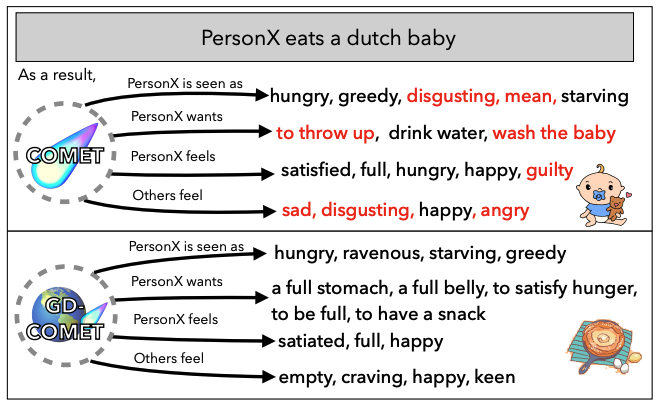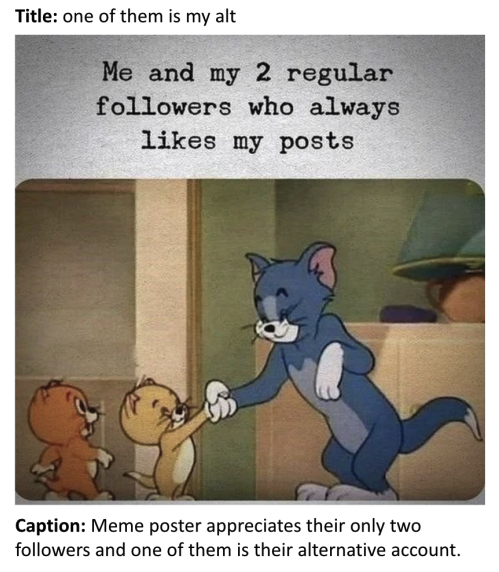Commonsense Reasoning

We all share basic knowledge and reasoning ability regarding causes and effects, physical commonsense (if you cut the branch you sit on, you will fall), and social commonsense (it's impolite to comment on someone's weight). Endowing machines with such commonsense is challenging. Such knowledge is too vast to collect from humans and often too trivial to be mentioned in texts.
- ACL 2020 commonsense reasoning tutorial
- A blog post about commonsense reasoning in NLP
- I participated in this episode in the TwiML AI podcast and talked about commonsense reasoning in NLP.
- EMNLP 2020 paper about unsupervised commonsense QA
- EACL 2023 paper about enhancing event coreference models with commonsense knowledge
- I translated the Winograd Schema Challenge to Hebrew (with name and cultural adaptations): [HTML version] [JSON lines file]
Culturally-Aware NLP Models

English LLMs have a narrow—Western, North American, or even US-centric lens, as a result of training on web text from mostly US-based users. Just like cross-culture human interactions can lead to miscommunications, users from diverse cultures that are interacting with LLM-based NLP tools may feel misunderstood and experience the tool as less useful. This is because culture plays a significant role in shaping our worldviews, beliefs, and communication styles. Lack of cultural awareness may lead to models perpetuating stereotypes and reinforcing societal inequalities, impeding their effectiveness for users from non-Western countries. We are working on evaluating the cultural awareness of LLMs, as well as enhancing LLMs with cultural competence.
- Preprint about evaluating the cultural understanding of VLMs
- Interview for the AI Purity Podcast about biases and cultural considerations in LLMs
- EMNLP 2023 paper about enhancing COMET with cultural knowledge
- Findings of ACL 2022 paper about the interpretation of time expressions in different cultures
Multimodal Models

Language and perception are intertwined. Language understanding is often grounded in sensory perception,
such as vision and speech. In turn, perception is shaped by language, which affects how we see and describe
the world around us. Most NLP research is focused on language, with some recent work on vision and language.
Models that incorporate multiple modalities can facilitate more human-like interactions with the user,
leveraging non-verbal cues such as tone of voice, facial expressions, and gestures.